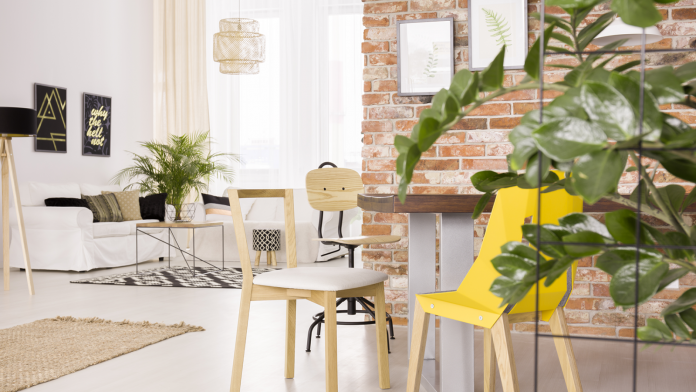With all our exciting success stories of the advancements in functional printing, there is still one area that we haven’t yet gotten into: printed interior! In this field of application, printers have to follow different rules that we summarize in our article.
3D printing is one of the future technologies to watch and a drupa favorite. Be it printing medical supplies, power sector or architecture – its wide field of application always supplies us with new interesting stories and developments to report on. These days, even 3D-printed furniture is a thing. But 3D-printed interior is not the only market on the rise everyone should watch right now. After all, companies that focus on long-established processes also support the furnishing industry. Printed interior provides customers with the opportunity to customize off-the-shelf items to match their own personal aesthetic and fit their needs perfectly. What printers have to consider when entering the market is something that we haven’t quite touched on yet.
Discovering New Territory
Therefore, we now leave it to Simon Pless, CEO of German large format printer Erler+Pless GmbH, to share what challenges they had to tackle when venturing into the area of interior design. In an article for print.de he says that while the company might have already been established and experienced as a printer of graphics and advertising prints, none of that knowledge came in handy in this new discipline. They had to dip their toes into construction and look for other things than just high visual quality and lightfastness. Going from a design to the finished product could take them up to two years in conceptualising and constructing.
The Rules Of Construction
Since an item of furniture might not be replaced in years, the topic of warranty is an important aspect for every piece of interior, be it widely available commercial items, 3D printed furniture or individually modified printed interior. Therefore, it is also important to observe the rules and standards already set in the building industry, since printed interior has to match up to other constructed interior to compete or even be approved to enter circulation. And of course, since this is part of the construction business, a printer would need the appropriate construction certificates – the usual print industry certification will be of no use here!
In working in the field of the building sector, new approaches and ideas are needed. The logistics of a construction site sure are different from the usual delivery of office supplies and magazines. Builders often work on several rooms on separate floors simultaneously and printers have to be able to supply all projects at once.
It’s Worth It
Erler+Pless customizes commercial items and turns them into one of a kind product, using their innovative print and design techniques. Wallpapers, cover materials for any sort of interior, vertical blinds, tabletops, lampshades – everything can be designs according to the customer’s wishes to create a coherent and harmonic interior design throughout. The company’s printed interior technology expands their product range to materials like glass, fabric and wood. But printed interior isn’t only a visual design choice, it can also be used to turn a normal wallpaper into a sound-insulating medium or adding an odor absorbent fabric.
In 2017, they won the Druck&Medien Award for three of their interior designs in large format printing. It is save to say that they have established themselves as one of the leading business to successfully implement printed interior into their portfolio. And they are not the only ones to advance in this field: Companies like Rebel Walls, Interiors Printed, 7Color and Glasposter are joining in as well, with customizable wallpapers and designs, while other manufacturers, like Hapytaly and Prints van Oranje B.V., are offering their costumers full space concepts.
What do you think are the biggest challenges when it comes to printed interior?











